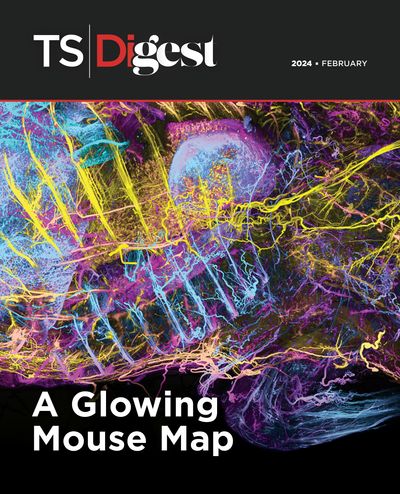The Culprits Behind Motion Sickness
Scientists identified neurons that drive the disagreeable symptoms of motion sickness in mice.

From astronauts to roadtrippers, most people have likely experienced the cold, sweaty, stomach-churning sensation of motion sickness. Humans aren’t alone in this affliction: dogs, mice, and even fish share in this familiar misery.1
Despite its prevalence, motion sickness mechanisms are incompletely understood, and many available treatments cause problematic drowsiness. Now, a team of neuroscientists, including Albert Quintana and Elisenda Sanz at the Autonomous University of Barcelona and Richard Palmiter at the University of Washington, have pinpointed the neurons that control motion sickness symptoms in mice, suggesting new therapeutic avenues.2
First, the scientists created a rotation device—like a cross between a carnival ride and NASA’s high-G training centrifuge—to produce motion sickness symptoms like reductions in body temperature, food intake, and locomotion. Building on previous research showing that glutamatergic neurons in the vestibular nuclei (VN) mediated responses to hypergravity, the neuroscientists demonstrated the importance of these neurons in rotation-induced physiological responses as well.3
Next, the researchers analyzed the neurons’ mRNA transcripts to identify subpopulations within this diverse group of cells. One subpopulation expressed cholecystokinin (CCK), a peptide implicated in nausea and reduction in food intake. When researchers stimulated these neurons optogenetically, they recapitulated many symptoms of motion sickness. Even more promising from a translational perspective, a CCK antagonist blocked some of the rotation-induced symptoms.
The treated animals displayed normal levels of movement. “That was one of the cool things about this study,” said Quintana. “We have identified a different mechanism to prevent motion sickness that doesn’t seem to affect the alertness circuitry in the brain.”
“This was a fantastic study,” said Rebecca Lim, a neuroscientist at the University of Newcastle, Australia who was not involved in the research. “It was great to see this really comprehensive work examining behavioral and neural responses to this motion sickness-eliciting stimulus.”
References
- Helling K et al. Acta Otolaryngol. 2003;123(4):488-492.
- Machuca-Márquez P et al. Proc Natl Acad Sci U S A. 2023;120(44):e2304933120.
- Abe C et al. Commun Biol. 2020;3(1):227.


